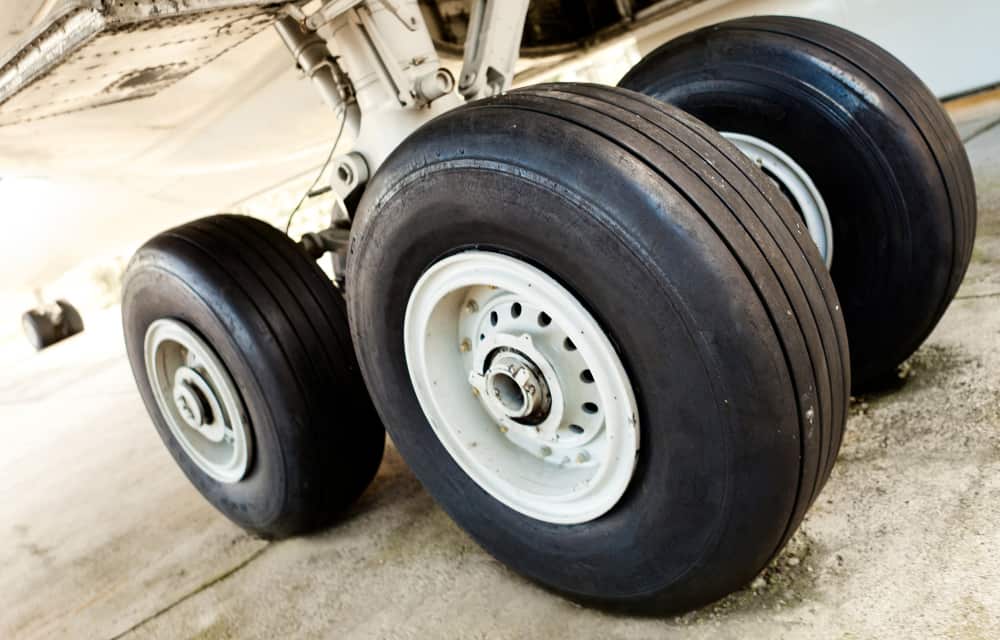Choosing the Most Efficient Aircraft Wheel NDT Inspection Tools

In every aircraft takeoff and landing, there’s no denying wheels play a critical role. These components can be subject to extreme conditions and require regular inspection to ensure operational safety. Aluminum or magnesium wheel halves are prone to developing cracks as a result of metal fatigue, or heat damage from intense braking.
Today the most efficient aircraft wheel NDT inspection techniques use eddy current tools. Eddy current techniques are superior to time-consuming dye penetrant aircraft wheel NDT inspection techniques for several reasons. The eddy current testing advantages focus on efficiency and accuracy and include:
- Minimum preparation and instrument setup time.
- The ability for a single technician to manage the entire inspection process.
- Detection of a wide range of flaws such as surface defects, hidden cracks, and changes in material conductivity or hardness caused by heat damage.
- Immediate, detailed results regarding the location and sizing of flaws.
- Incorporating automation to improve inspection efficiency and accuracy.
However, the efficiencies enabled by eddy current aircraft wheel NDT inspection techniques require up-front investments in the latest eddy current tools and training.
Eddy Current Inspection Certification
Attaining certification in eddy current inspection skills requires an investment of time. It takes a minimum of 40 hours of formal classroom training followed by 1,200 hours of on-the-job experience to perform aircraft inspections. To maintain certification, technicians take additional tests and practical examinations every three to five years. MROs making these investments of time and money must be certain there’s long-term economic justification.
A Nearly Unlimited Variety of Aircraft Wheel Designs
Once you’ve developed the in-house inspection skills, the next significant challenge is the variety of aircraft wheel profiles. Materials, designs, and diameters vary greatly. A single wheel manufacturer may offer hundreds of different models. Some of the most popular aircraft types, like the Boeing 737, have been in production for decades have variations among the generations of aircraft. As aircraft manufacturers apply new materials or manufacturing techniques, they continually modify wheel designs.
Of course, most aircraft MROs don’t have to be prepared to inspect every wheel variety. They will need to prepare for the common wheel designs used by the carrier or the private aircraft clients operating on their field. Eddy current inspection tools excel in meeting this need in two ways: application-specific probes and automated inspection methods.
Application-Specific Eddy Current Probes
Depending on the type of aircraft and frequency of use, aircraft wheel NDT inspection may include rim, wheel bead seat, barrel, bolt holes and their counterbores, ventilation holes, as well as conductivity and hardness testing. To meet these requirements eddy current probes designed to inspect specific wheel profiles can precisely match the contour, circumference, conductivity, or specific area of the wheel being inspected.
Automation Improves Inspection Efficiency
An accurate and efficient inspection method secure the wheel to a mechanized turntable to maintain a constant rotational speed that provides the best signal based on the calibration procedure. This allows the inspector to focus on holding the eddy current probe in place as the wheel rotates automatically and improves the probability of detection and accuracy of defect sizing.
MRO operations that have high-volume aircraft wheel inspections can further improve inspection efficiency with automated test stands designed and engineered to accommodate their specific needs. These stands support the highest efficiency in wheel inspections with:
- A complete set of custom probes immediately available for plugging into the eddy current testing instruments.
- Eddy current instruments that automatically recognize the probe type and quickly set the inspection configuration parameters.
- Pre-configured probe calibration based on wheel type and inspection area.
- Automatic recording and reporting of inspection results to meet regulatory compliance requirements.
Powerful, highly-configurable eddy current instruments, a set of probes designed for an MRO’s wheel inspection needs, and an automated test stand engineered to organize all of these inspection tools can facilitate greater efficiency in aircraft wheel inspections.
Aircraft Wheel NDT Inspection Efficiency
Aircraft MROs who regularly conduct wheel inspections can benefit from the latest developments in eddy current technology. Application-specific probe designs, automatic probe recognition and configuration, improved signal to noise ratio improve the probability of flaw detection. Eddy current instruments running powerful software for data acquisition and analysis give inspector immediate insight regarding the type and extent of flaws discovered. Consulting and engineering services bring all of these tools together to design solutions to give MROs the ability to conduct wheel inspections more efficiently and accurately.
For over 50 years, Zetec has been a leader in the NDT industry. We’re a leading provider of nondestructive testing tools for aircraft inspections. We’ve designed over 10,000 custom probes to handle every variation of NDT inspection needs. To take advantage of the latest advancements in eddy current inspection technology contact us today.

Zetec’s designers are industry-leading experts in ultrasonic and eddy current technologies, and we can help you navigate any of our NDT testing solutions or devices.
